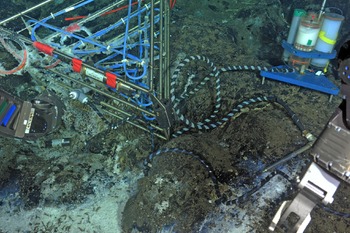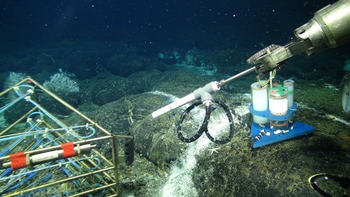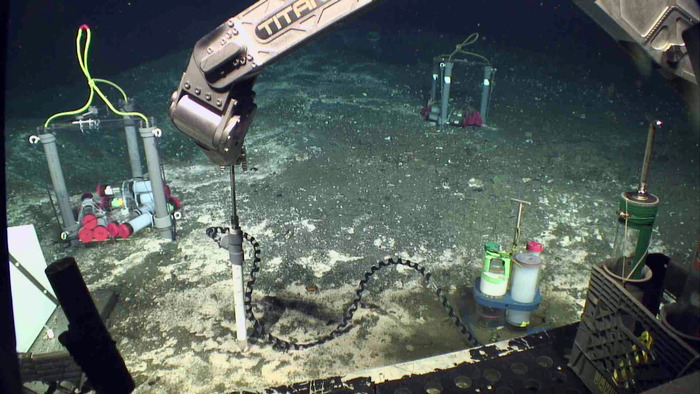
An Osmotic fluid sampler is installed in a small diffuse flow site hosting abundant tubeworms, limpets, and palm worms in the ASHES hydrothermal fluid. When recovered next year, the fluids this sampler host will provide information on how vent fluid chemistry changes over time. Credit: NSF-OOI/UW/ISS; Dive R1835; V15.

A new osmotic fluid sampler is about to be installed in a diffuse flow site hosting a 3D temperature array in the ASHES Hydrothermal Field on the summit of Axial Seamount. Each year, as part of the annual operations and maintenance cruise, a sampler is recovered and a new one installed. Onshore analyses of the entrapped fluids provide insights on the evolution of fluid chemistry in time, in response to changing environmental conditions e.g. earthquakes, temperature, microbial utilization of gases and different elements. Credit: UW/NSF-OOI/WHOI; V16.
Long term measurements of fluid chemistry are critical to understanding hydrothermal and methane seep environments because fluid chemistry impacts and is impacted by reactions in hydrothermal chimneys, in seep sediments, and by the associated biota that thrive inside and outside of the active black smokers, in the subseafloor, and where methane is seeping from the seafloor in margin environments.
To meet this need, the Regional Cabled Array uses uncabled osmotic samplers that draw in hydrothermal fluids and methane seep-derived fluids into small capillary-like tubing for periods of one year. These instruments, now installed in diffuse flow site coupled to the 3D thermistor array near the Mushroom black smoker chimney and near Einsteins' Grotto at Southern Hydrate Ridge, are recovered annually by the remotely operated vehicle. Onboard, small ~ 1 m length sections of the capilary tubing are cut and the fluids removed for shore-based chemical analyses to examine the temporal evolution of fluids at the two sites. These data provide insites into the impact of seismic events on fluid flow in these environments.


